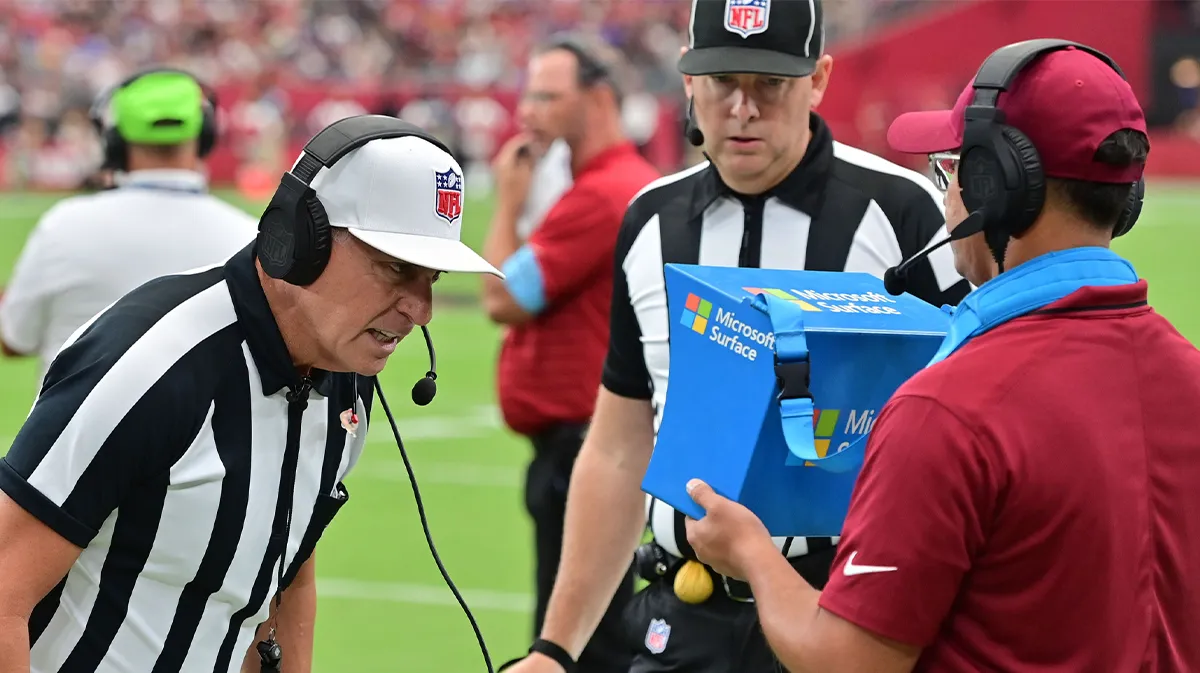During the recent matchup between the Chicago Bears and the Houston Texans, an unfortunate incident occurred involving a member of the NFL’s chain gang, who sustained a serious injury after a fall and required urgent medical assistance. This incident adds to a series of troubling events involving game officials and sideline staff, highlighting the physical risks faced by those who support the smooth operation of NFL games.
The chain gang member was quickly transported off the field via a medical cart, a somber scene that underscored the inherent dangers of working in close proximity to the action. This accident brings to mind a similar incident from a previous game between the Las Vegas Raiders and the Baltimore Ravens, where a chain crew member collapsed and required immediate CPR. Fortunately, the situation with the Ravens’ official improved, with reports indicating that he regained alertness and responsiveness after the critical intervention.
Such incidents draw attention to the physical vulnerabilities of sideline staff and the critical importance of having a prompt and effective medical response in place. In the case of the Bears-Texans game, medical personnel acted swiftly, providing immediate care to the injured chain gang member and ensuring his stability before transporting him for further medical evaluation.

This quick response is crucial in emergency situations and has become a focal point of discussion, particularly after comments from Ravens’ linebacker Kyle Van Noy, who had previously expressed concerns about the adequacy of medical attention at games.
Historically, the physical risks for game officials and sideline personnel have not always received the attention they deserve. For example, last year, during a game between the New Orleans Saints and the Tennessee Titans, a sideline official was severely injured after being inadvertently rolled on during a play that extended out of bounds. Such incidents illustrate the inherent dangers that non-players face while on the field, emphasizing the need for comprehensive safety measures.
The NFL has established protocols to handle such emergencies, and the prompt actions of medical staff at games often help prevent more severe outcomes. Similar protocols are seen in other sports; for instance, NHL official Steve Kozari lost consciousness after an accidental hit during a game but made a successful return to officiate in the Stanley Cup playoffs weeks later.
The reality is that the risks associated with NFL games extend beyond the players to include officials and support staff who are integral to the game’s operations. Each incident serves as a reminder of the ongoing need to assess and improve safety measures, not just for players but for everyone involved in the game.
As the NFL community awaits news on the recovery of the injured chain gang member from the Bears-Texans game, these events collectively emphasize the necessity of maintaining a strong focus on safety protocols and medical preparedness. Ensuring a safe environment for all participants, both on and off the field, remains a critical priority, as the physical demands of the sport present continuous and unpredictable challenges. The league, teams, and medical personnel must stay vigilant to provide the safest possible environment for the sport’s many stakeholders, reinforcing the essential support structures that uphold the integrity of America’s most popular sport.
